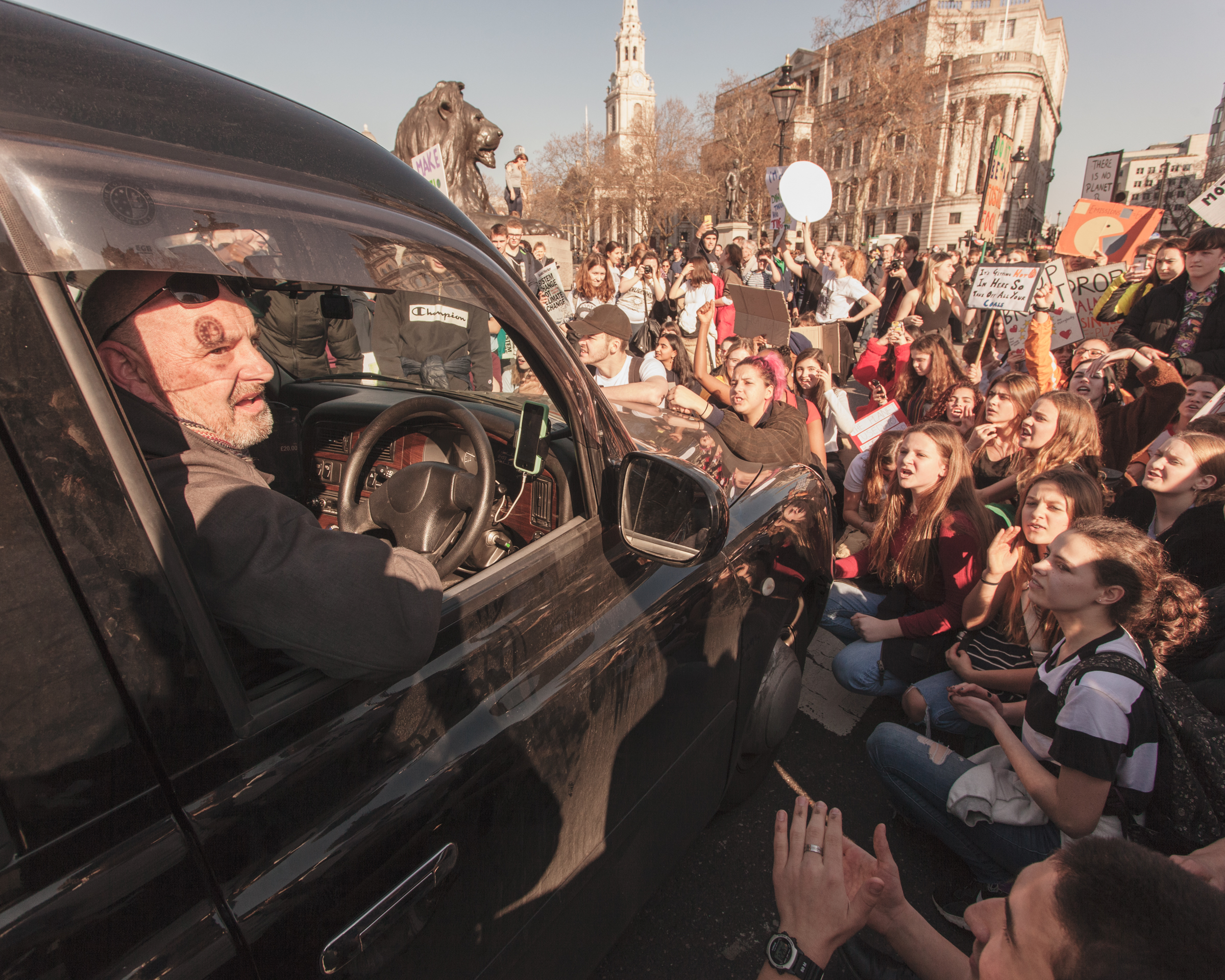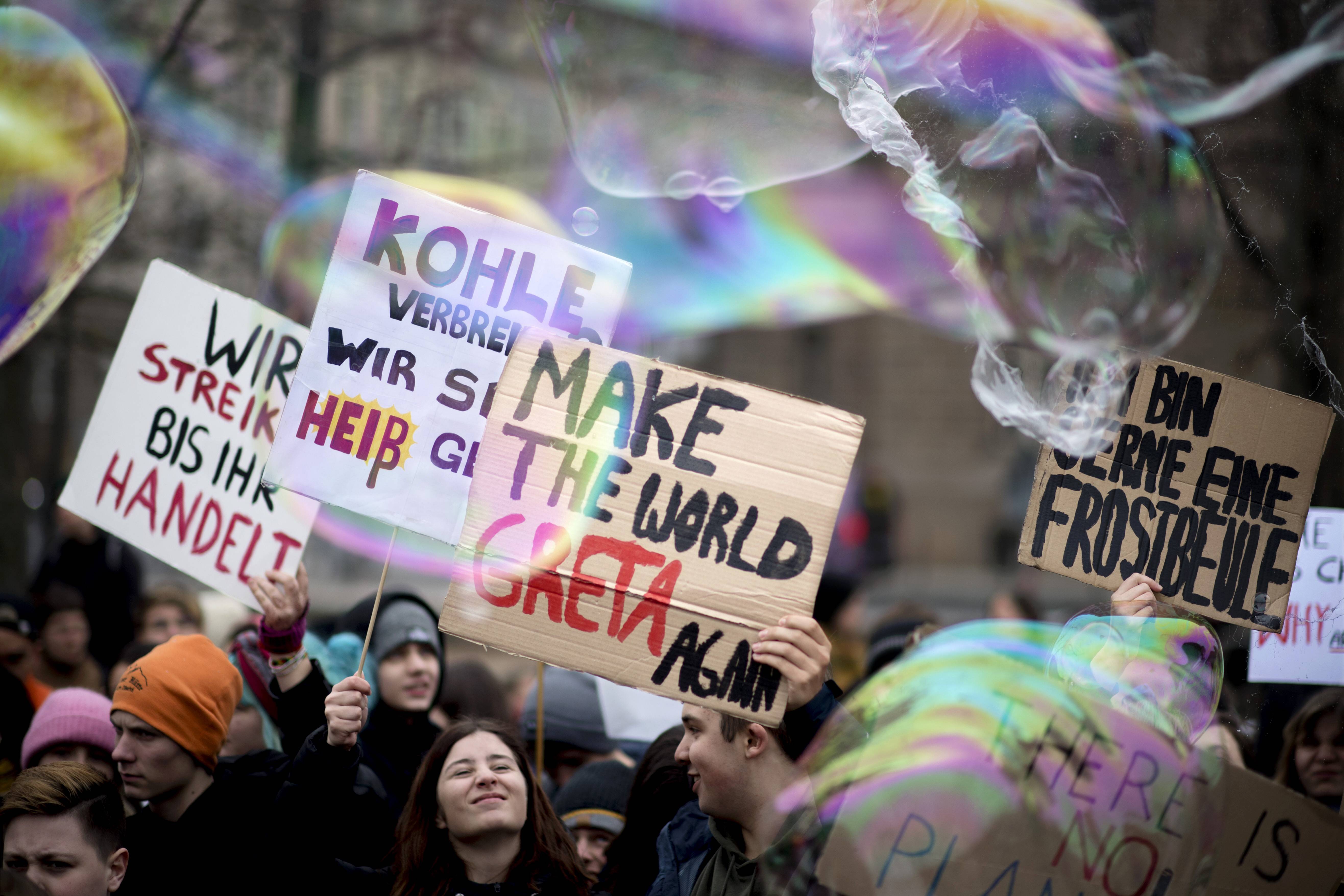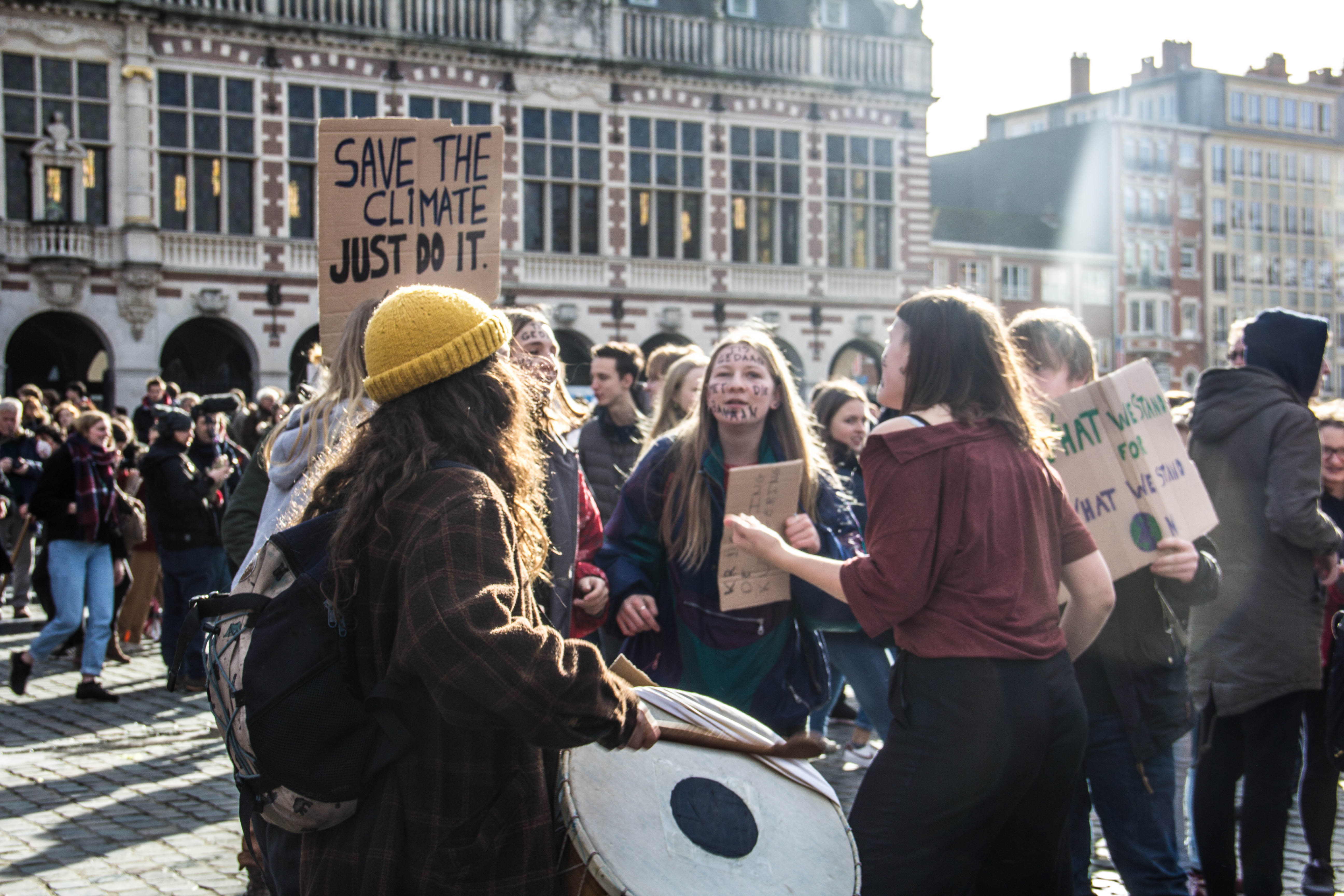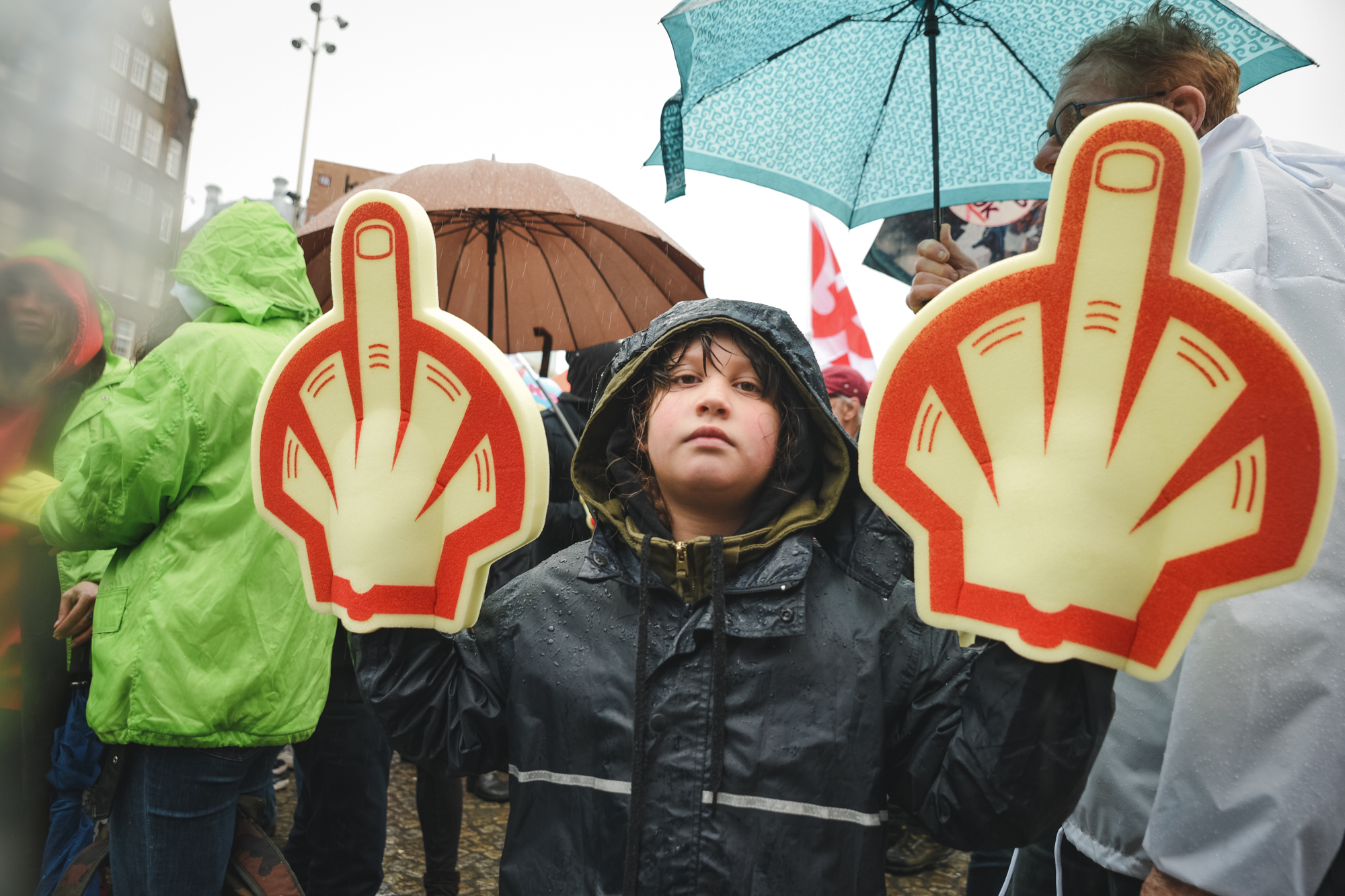The History of Today’s Youth Climate Strikes
Credit to Author: VICE Staff| Date: Fri, 15 Mar 2019 14:24:25 +0000
The environment is seriously flagging. Famously, if we don’t keep global warming to a maximum of 1.5C, we face the risk of a global climate catastrophe. So what are we doing about it? Even more famously: nothing, really. Governments and big corporations have decided that collapsing ecosystems and rising sea levels can wait. That polar bears eating dolphins because it’s warm enough for them to migrate farther north than ever isn’t really too big of a deal.
Thankfully, not everyone agrees. Last August, a Swedish 15-year-old decided to skip school one Friday and hold a one-woman climate change demonstration outside Sweden’s parliament. She did the same thing the following Friday. And the one after that, and every single Friday since, because Greta Thunberg – who this week was nominated for the Nobel Peace Prize – believed that young people should not be the ones to suffer from the negligence of previous generations. Her activism has spread and inspired the international movement Fridays for Future. Around Europe, students have been been skipping school on Fridays to take to the streets and put pressure on their country’s governments to do something about saving the planet we live on.
Today, tens of thousands of young people from across 80 countries are expected to take part in climate demonstrations. Here’s a look back at the key movements and demonstrations around Europe that got us to this point.
THE UK
On the face of it, the UK’s climate politics actually aren’t too terrible. As VICE reported in February, we’ve almost halved emissions since 1990, and have committed to reducing them a bunch more by 2050. Equally: the government shags fracking; our agriculture industry is terrible for the environment; and nobody but your Uber driver is into electric cars.
A couple of groups have emerged to protest all that: the UK Student Climate Network and the UK Youth Climate Coalition. Nobody had heard of either in 2018, but because of their big demo in February they are now reviled by everyone who subscribed to Amazon Prime for The Grand Tour.

Who are the key activists?
So far, the only big action we’ve seen was that #YouthStrike4Climate protest in February, when thousands of kids skipped school to demonstrate around the country. In London, 17-year-old Anya Taylor – a UK Student Climate Network co-founder – told us: “The responsibility to protect the earth from climate change has fallen on us.”
How have the protests gone?
Pretty well, yeah. The turnout in February was huge – much higher than organisers expected – and only a couple of people got arrested.
What’s the reaction been like?
The government criticised the February protest for wasting “lesson time”, as if the future of the planet is comparable to learning about sedimentary rocks. We actually spoke to some teachers ahead of the big day about that, and they all reluctantly backed their students missing class to shout at politicians.
The right-wing commentariat decided to mock the teenagers for protesting, because… all teenagers… are stupid? One used his Times column to explicitly rinse his own teenage daughter. Sensible media saw the protest for what it was: a younger generation, failed by older generations, taking a stand.
What’s next?
Currently, not a lot. There’s another UK-wide youth demonstration today, and radical direct action group Extinction Rebellion recently announced its youth wing. But in terms of any tangible change – or the government engaging whatsoever – sadly, nothing. Maybe they’ll get on it once Brexit is sorted? Which, as we all know, is definitely going to be soon.
GERMANY

Chancellor Merkel likes to think of herself as the “Klimakanzler” (the climate chancellor), but in reality, Germany’s climate politics have taken a step back under her. The Green party often gets framed as the “prohibition party”, as the government continues to avoid spending what’s needed to modernise our infrastructure.
Who are the key activists?
Young women, who else? Luisa Neubauer, 22, from Göttingen; Julia Oepen, 17, from Hamburg; and Lilli Meister, 18, from Castrop-Rauxel.
How have the protests gone?
The protests started in September of 2018 and have since spread throughout the country. On the 15th of February alone, the organisers counted 30,000 students and pupils on strike – and despite it being a public holiday in the city of Berlin, even the 8th of March protest saw a significant, yet smaller than usual, turn-out for the strike. Germany’s official Fridays For Future site claims that, today, there will be demonstrations in 186 cities.
What’s the reaction been like?
German climate scientists support the movement, and Angela Merkel – though reluctant at first – has recently praised the students for taking action. Being truly German, half of the population seems to prefer discussing why the students are demonstrating in the middle of a school day, instead of educating themselves on ways they can join the effort to stop the world from burning down in a climate catastrophe. Nobody is asking why it’s taken young people to form a vital climate-friendly movement. The leader of Liberal party FDP, Christian Lindner, said, “You cannot expect from children and teenagers to see what is technically reasonable, and what is economically feasible. It’s a job for professionals.” That’s especially ironic as Lindner himself famously founded a professional PR agency when he was still in school.
What’s next?
The young people leading the demonstrations will hopefully be in positions of legislative power in about 20 years. Until then, it doesn’t seem likely that our current crop of politicians will act. Even a possible coalition of the Conservatives with the Green party would still protect corporate and state interests, and probably only put minor additional taxes on airfares and little more investment into the train network. With Trump in office and the UK doing whatever it is the UK is doing, nobody here is confident of some grand international coalition coming together to tackle the crisis any time soon.
WATCH: Scientists can now link extreme weather events to climate change
Belgium

Belgium has a bunch of governments, so we also have a bunch of climate ministers. Four, to be exact. For a long time we could act as if we were one of the best in global climate change politics, but when we failed to join the more ambitious countries agreeing to the Katowice Climate Package in December of 2018, something changed. Over 70,000 grown-ups marched in Brussels in December, and since the beginning of the year ten climate protests have been organised by students. Everyone was on board at first, but now old people and nervous politicians are saying they should stay in school.
Who are the key activists?
Anuna De Wever, 17, and Kyra Gantois, 20, are our heroes on this. Anuna is the face and spokesperson of the movement. They have received some advice from Greenpeace and climate experts, but almost all of the work is done by the large network of students themselves.
How have the protests gone?
The protests started out in Brussels and have spread all over the country. Belgium has arguably hosted the largest demonstrations in Europe, with tens of thousands of protesters marching every week. The record number in Brussels was 35,000 on the 24th of January. A week later, 12,500 students marched in Brussels, 15,000 in Liège and 3,500 in Leuven.
What’s the reaction been like?
At first, everyone was amazed by the determination, eloquence and organisational skills of Anuna, Kyra and other core members of Youth for Climate. By going from 7,000 to 14,000 to 35,000 marchers in just three weeks, no one could ignore their message. They were all over the news, the papers and in pop culture.
Then, out of nowhere, a speech by Joke Schauvliege – the Flemish minister for Town and Country Planning, Environment, Nature and Agriculture – got leaked. At a meeting with the General Farmers Syndicate, she claimed that the protests were a conspiracy against her by left-wing environmental groups. She also claimed the state security agency had informed her about this conspiracy. All of this was denied by the agency, and a day later the minister resigned.
The climate protests are becoming more and more controversial, and in the lead-up to the one in Antwerp mayor Bart De Wever, who is also the president of Belgium’s biggest party, condemned the protests, saying teenagers should be in school and should have a bit more faith in science.
What’s next?
Anuna and Kyra have said that they are prepared to continue the protests until the national elections on the 26th of May. So far, they’ve been successful at dominating the political agenda, but it will be difficult to keep the momentum going past the international day of action and through to the end of May.
Our biggest political party, the Flemish nationalists, who left the government in December over the UN Migration agreement, hope to make immigration and safety the main topics during the upcoming elections. But thanks to Youth for Climate, nobody is talking about immigration, and there’s a chance the green parties will be able to form a coalition government. A lot can happen in the next two-and-a-half months, but the impact of the climate protests might change our entire political landscape.
Netherlands
According to our Prime Minister, his government is “the greenest government ever”. In reality, it is lagging far behind on its 2020 climate goals, and the Netherlands is one of the most polluting countries in Europe.
How have the protests gone?
Our protests haven’t been as big as the ones in Belgium, probably because protesting has never been a big part of Dutch culture, and due to the lack of one inspiring teen activist everyone can get behind. On top of this, the Dutch climate movement seems a bit fragmented – there’ve been different protests organised by different groups, like Youth For Climate (high school students), Students for Climate (university students) and the old fashioned environmental organisations.

What’s the reaction been like?
Right wing media responded mostly by saying “Ha, look at those ignorant, hypocritical teenagers, with their polluting iPhones and plastic bags,” fuelled by a video made by a right wing newspaper, showing teenagers eating McDonald’s after the protest. A few days later, the Prime Minister invited a group of six students to his office, which resulted in a hard to watch media event, with students who looked completely overwhelmed and a proud Prime Minister with a beaming smile.
What’s next?
Last Sunday, 40,000 young and old people marched through Amsterdam despite very heavy rainfall. Three days later, the research institute Netherlands Environmental Assessment Agency presented a report to “the greenest government ever”, which concluded that its climate plans fall short in achieving its CO2 emission reduction goal by 2030. The government responded by promising to implement a carbon tax for companies.
France
Back in August of 2018, TV host turned French Environment minister Nicolas Hulot resigned, saying he could no longer stand the fact that ecology wasn’t the government’s priority – so it’s safe to say that France is not at the top of ecology game. Yet, things might be changing following the success of a 2 million-strong petition calling on the prosecution of the French state for its inaction on climate change.
How have the protests gone?
The youth movement started picking up from the 8th of February, when students voted in favour of the strikes. Since then, every Friday, students have demonstrated peacefully in Paris and elsewhere. It feels like they are really building something. A Youth for Climate France spokesperson said they are expecting 500,000 students to protest across 150 cities today. It might be seem ambitious, but who knows? We do love a protest here. Our education minister did try to disrupt the protests by organising debates on the environment in high schools one of the Fridays, but it was dismissed by Youth for Climate as a “desperate attempt”.
Who are the key activists?
We haven’t had a singular figure like Greta, but numerous NGOs and youth associations are getting involved, such as YouthForClimate France, Fridays For Future and On est prêts (We are ready), an initiative where YouTubers give easy-to-follow advice on how to fight climate change, such as sharing tools with neighbours, picking up trash in the street or investing your money in sustainable energy.
What’s the reaction been like?
Obviously, some adults were keen to mock the student protests on the internet. We did a little video about that.
What’s next?
Politicians haven’t done much yet – possibly because they had a lot on their plates with the Yellow Vests movement, or because they think the protest will slowly die. But the pressure is growing. We know that Emmanuel Macron met with Greta Thunberg on the 22nd of February, but we don’t know if he decided to buy a Tesla or eat less meat.
Read more climate change coverage from our Save Yourselves series.
This article originally appeared on VICE UK.